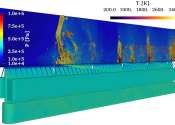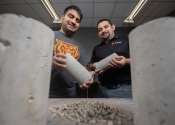Hybrid phase-change memristors lead to new computing possibilities
By strategically straining materials that are as thin as a single layer of atoms, University of Rochester scientists have developed a new form of computing memory that is at once fast, dense, and low-power. The researchers ...
Nov 30, 2023
0
117









